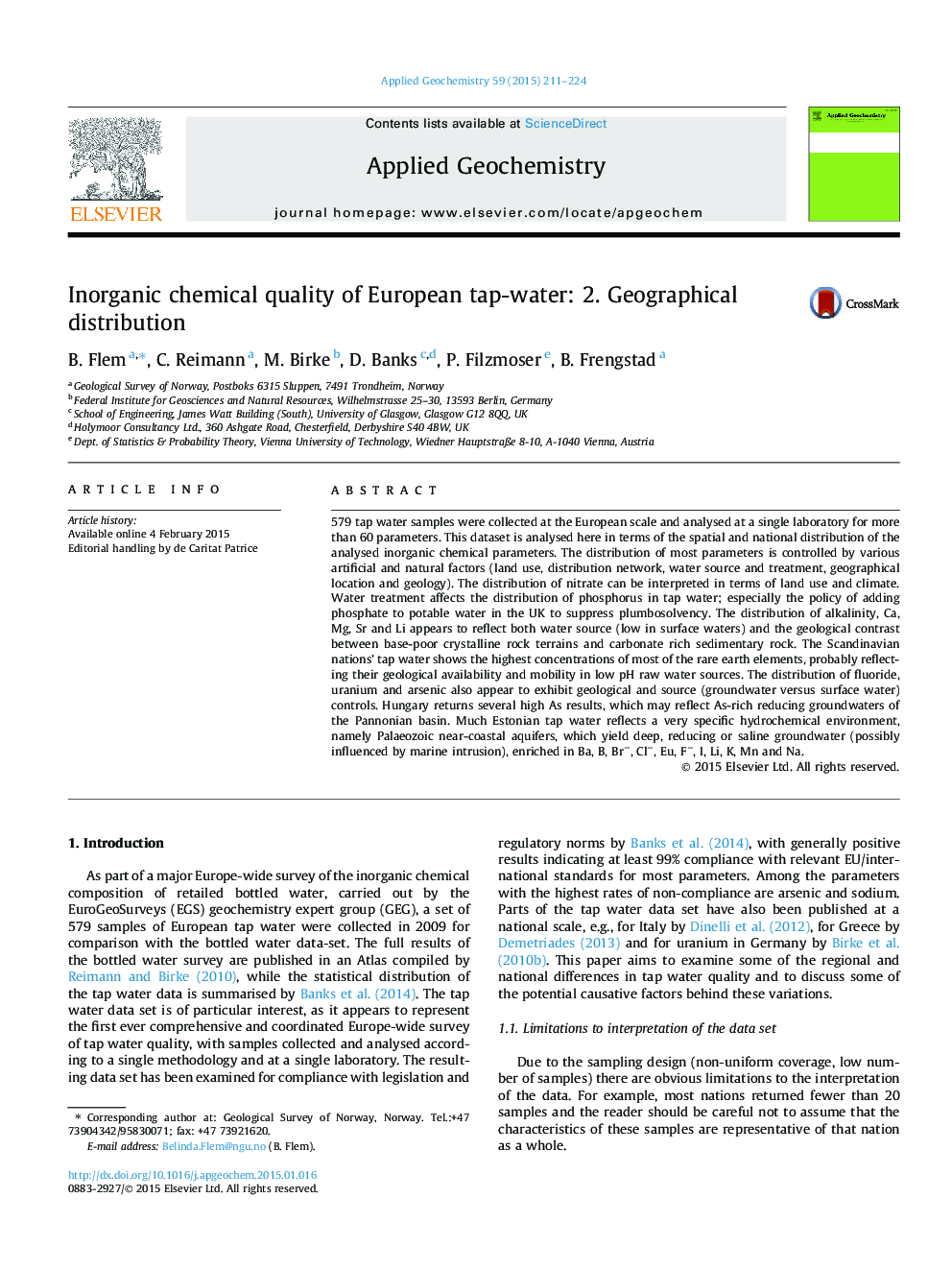| Article ID | Journal | Published Year | Pages | File Type |
|---|---|---|---|---|
| 4435684 | Applied Geochemistry | 2015 | 14 Pages |
•European scale comparison of tap water.•579 tap water samples have been analyses for more than 60 parameters.•Chemical geographical distribution.•Water treatment processes.•Importance of geology on tap water quality.
579 tap water samples were collected at the European scale and analysed at a single laboratory for more than 60 parameters. This dataset is analysed here in terms of the spatial and national distribution of the analysed inorganic chemical parameters. The distribution of most parameters is controlled by various artificial and natural factors (land use, distribution network, water source and treatment, geographical location and geology). The distribution of nitrate can be interpreted in terms of land use and climate. Water treatment affects the distribution of phosphorus in tap water; especially the policy of adding phosphate to potable water in the UK to suppress plumbosolvency. The distribution of alkalinity, Ca, Mg, Sr and Li appears to reflect both water source (low in surface waters) and the geological contrast between base-poor crystalline rock terrains and carbonate rich sedimentary rock. The Scandinavian nations’ tap water shows the highest concentrations of most of the rare earth elements, probably reflecting their geological availability and mobility in low pH raw water sources. The distribution of fluoride, uranium and arsenic also appear to exhibit geological and source (groundwater versus surface water) controls. Hungary returns several high As results, which may reflect As-rich reducing groundwaters of the Pannonian basin. Much Estonian tap water reflects a very specific hydrochemical environment, namely Palaeozoic near-coastal aquifers, which yield deep, reducing or saline groundwater (possibly influenced by marine intrusion), enriched in Ba, B, Br−, Cl−, Eu, F−, I, Li, K, Mn and Na.
